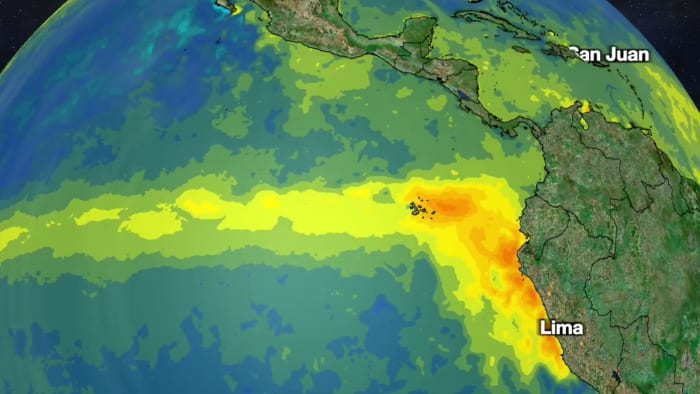
Orlando, Florida – It was the talk of the town and now, El Niño is officially here. The National Oceanic and Atmospheric Administration officially announced the existence of El Niño on Thursday.
El Niño is a natural climate phenomenon characterized by higher-than-average sea surface temperatures in the central and eastern Pacific Ocean near the equator, which occurs on average every 2-7 years. The effects of El Niño extend beyond the Pacific Ocean.
There is a varying intensity of El Niño and depending on the season, a wide range of effects.
For hurricane season, the Atlantic basin tends to have a less active year in terms of the number of storms. This is because during El Niño, there is usually an increase in wind shear. Wind shear is detrimental to the development of tropical storms.
[TRENDING: Become a News 6 Insider]
On the flip side, the tropics are most active in the eastern Pacific Ocean during El Niño.
There is an 84% chance that a moderate or strong El Niño will develop by winter.
While El Niño usually reduces the number of hurricanes in a given year, it is important to remember that it only takes one. For example, 1992 was well below the average hurricane season in terms of the number of storms, but it also produced Category 5 Hurricane Andrew, which devastated southern Florida.
For the 2023 hurricane season, while El Niño is the biggest suppressor, the Atlantic basin including the Caribbean Sea, Gulf of Mexico, and Atlantic Ocean are well above normal in the temperature department.
The influence of El Niño usually wins out when it’s strong, but a very warm Atlantic basin provides higher-than-usual uncertainty about how the season will end.
Get today’s headlines in minutes with Your daily Florida newspaper:
Copyright 2023 by WKMG ClickOrlando – All Rights Reserved.




More Stories
Journalists convicted in Hong Kong sedition case
Stand News: Hong Kong journalists convicted of sedition in case critics say highlights erosion of press freedom
Shark decapitates teen off Jamaica coast